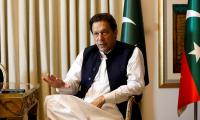By most accounts, 2023 seems to be election year for Pakistan. In that case, all political parties will prepare their manifestos and go into electioneering mode. Media, civil society and even rival political parties will scan the manifestos and raise questions on many of their salient features. However, what all political parties must add and what all political parties must talk about is the idea and plan of educating the girls of Pakistan.
The most important task for any political party is to focus on the more than 23 million out-of-school children. This is, by no means, a small number at all. This means a catastrophic future if this untapped and wasted human resource isn’t educated. Girls continue to stand out as the larger percentage of the millions of out-of-school children. This requires a girl student specific policy and action.
A ‘Beti Parhao, Mulk Bachao Programme’ across Pakistan is the need of the hour. Such a programme should be at the forefront of every political party’s manifesto and election campaign. It should be designed to encourage, retain and popularize female education on a war footing. Aggressive and in-your-face media campaigns promoting education for the girl child and its benefits to the girl herself, her family, her future and the country itself, should be planned and executed.
This campaign has to be done in local/ regional languages and the state apparatus needs to be used to drive this thought vehemently into the houses and minds of the country. The focus on female education in manifestoes and election campaigns is just a starting point. The idea is to take this noise into parliament and government offices once in power or even when in opposition.
Political parties need to treat women’s education as a priority not just for the optics but also for the needs of this country. Pakistan has wasted enough of more than half of its workforce in the name of shame, honour, religion, social pressures, economic survivals and political negligence. Today’s Pakistan should not even see this as an option but a compulsory task that we are already late on.
The financial, social and political opportunity cost of not educating our women has been disastrous to put it mildly. It has been the root cause of many social and economic issues of the country today. Thus it is time to deliberate upon it and chalk out what can be done and how it can be done to promote education for the girls in Pakistan.
The first phase of the campaign to promote women’s education is to create its need and its importance in the psyche of the nation. TV dramas/plays need to create that powerful impact through shows that emphasize the positive results of how parents can fight stale traditional and social impediments while educating their daughters. Powerful scripts need to be written to show how a girl getting education can do wonders for her family and the country at large. Strong female characters can also be used to show this. Even films can have a similar impact where good stories can leave a lasting impact especially on fathers and brothers and perhaps even mothers who oppose or restrict female education.
Another method of planting the need or desire for girls to be educated is to use the electronic and digital media in promoting short, crisp and impactful messages through popular celebrities in both the national and regional languages. It is pertinent to use local success stories as well as national success stories of Pakistani girls achieving milestones in various sectors and fields across the country. People listen to celebrities and men and women who have popular following should be used for this national cause.
Pakistan has one of the highest teledensity footprint and it will be criminal if it were not used for education, awareness, civic sense etc. Improved internet and bandwidth service needs to be a priority for the government. The Covid-19 pandemic paced up a global digital and data-driven transformation, with digital technologies now being widely used for learning. Digital literacy has become almost as important as traditional literacy.
Bangladesh is reaping the benefits of a higher literacy rate and reducing gender-based discrimination. It is the second largest source of online workers, according to a study by the Oxford Internet Institute (OII), a multidisciplinary research and teaching wing of the University of Oxford. The result of the study put Bangladesh just below India and on top of the United States. India, the largest overall supplier of online laborers provides 24 per cent of the total global online workers followed by Bangladesh with 16 per cent and the US with 12 per cent.
All of this is doable and achievable in Pakistan only if we chalk out a plan to apply digital technologies through foreign as well as home grown companies and then target the girls at homes or physically challenged girls not having access to schools or for that matter even adult women sitting in homes and not allowed to step out of their homes. This revolution can be transmitted into their minds directly without any hurdle. Pakistan must use technology to enhance female literacy.
Another channel to provide skills and not just education to our girls can be made by creating all-female incubation centres across the country to teach them the art of entrepreneurship and allow them to create their own businesses in whatever their specialty is. The incubation can be led by women entrepreneurs who can create teams to help women/ girls discover their dreams and talents even at a basic scale. These incubation centres can be financed and managed through a public-private partnership, inclusion of overseas Pakistanis, venture capital firms and multinational companies.
However, nothing will replace the need for physical schools for girls in close proximity littered across the landscape of this country. Nothing will match the heavy investment in female teachers to teach these future Pakistanis and make something out for them. These alone will require special funds, monitoring execution and then reflection of the process. Pakistan’s total spending (federal and provincial) on education is 1.4 per cent of its GDP, compared to India’s 2.9 per cent, and an average of 4.0 per cent of the GDP in South Asia. Here again the private sector can be used so that their training and best practices can be used to help government school teachers and classrooms to reach certain benchmarks of quality.
All of this may look impossible today. But with a determined leader/ leadership, women’s can be heavily prioritized and tall targets can be sign-posted and achieved over time. It will be a long, cumbersome and bumpy journey but it will all be worth it only if we stay focused, obsessed and on track.
With all its contradictions, issues and turmoil, Pakistan remains one of the most lucrative markets for anything and with the majority of Pakistanis (women) brought into the mainstream of everything through education and skill empowerment, we will and can change the destiny of Pakistan. That is why we must believe and work towards a ‘beti parhao, mulk bachao programme’.
The writer is an educationist and International baccalaureate (IB) consultant. He tweets @TBandey
This demand has fueled rapid growth deposit base of Islamic Banks and Islamic Windows operated by conventional banks
But Punjab Agriculture Food and Drug Authority building near Thokar Niazbeg on Multan Road stands out
Macron has been particularly vocal in their criticism, asserting that withholding arms from Kyiv plays directly into...
As PPP governs province, Bilawal Bhutto Zardari holds strategic position to address both violence and its underlying...
Critics argue that strategy is vague, but closer look indicates strategic alignment with global trends and national...
To defeat it, we must distrust bot-driven narratives, to defeat it, we must verify sources before believing or sharing







